
If a photo is worth a thousand words, then in today’s Artificial Intelligence-infused journalism, a human byline is worth much more than that. The words coming out of a human writer’s head will give stories the validation and genuineness that no robot can match yet.
The major media networks are already realizing the value of the human capital that resides with every writer in the newsroom. Soon, the audience will, too, perhaps demanding that stories of consequence be written by humans.
Recently, The New York Times introduced a new style of bylines and did so with an article explaining to readers why this was an important step, and the first change in byline styles in the iconic newspaper’s 128-year history:
“With the increasing prospect of more A.I.-generated content filling the internet, we want to address this head-on by emphasizing the people behind our work..The new format, which we call enhanced bios, was designed to bolster trust with readers by letting them know who we are and how we work.
“Our journalists are what set The New York Times apart. This morning we published hundreds of byline pages in a new format that highlights the experience, expertise and ethics of our reporters, photographers, editors, and audio, video and data journalists from across the newsroom and Opinion.”
This is a move that is likely to be imitated by news media around the world. For the Times’ readers, the new byline style allows them to click on the byline and get a biographical sketch of the writer.
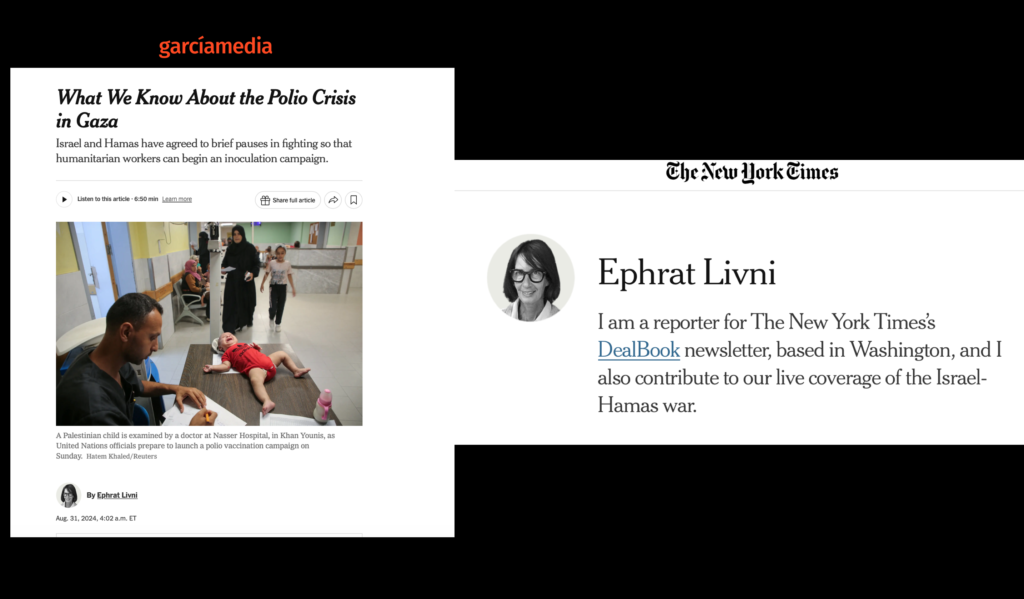
The rising value of a human’s byline
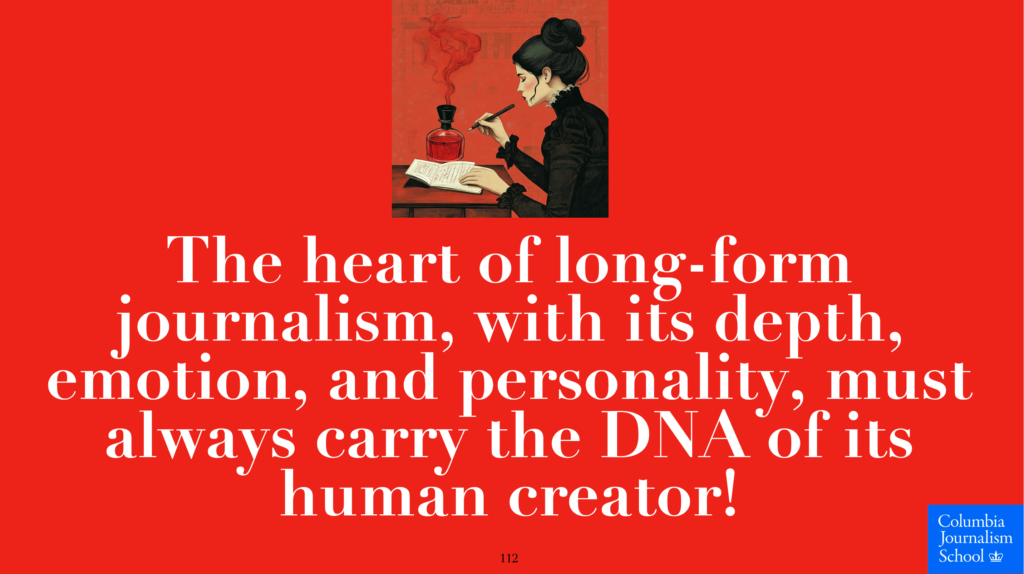
So now this becomes a topic of discussion at journalism conferences around the planet, such as the one in Bergen, Norway, where I recently led a session titled AI in the Media: The Human Voice Becomes More Important Than Ever. This conference was entirely focused for journalists who specialize in long-form writing. A segment in my presentation is titled The Scent of a Writer, which is appropriate for the message I try to convey: as Artificial Intelligence becomes a practical tool utilized by editors to save time and money, we are likely to see stories totally written by ChatGPT or its equivalents. This is an undeniable fact that all journalists will have to cope with. Three years from now, many routine stories across every department of a newspaper will be AI produced. Think around the world and nation briefs, compilations of sports summaries, for example.
As a result, writers will have to allow for their writing to show more of the “I was there” approach, dropping bread crumbs along the way that indicate that their stories are created with the writer’s unique style, their DNA—indeed, the scent of the writer.
I can only imagine how my great journalism professors of the 1960s would react to this. For example, we are likely to see more first person narratives, even for stories traditionally handled with no trace of the writer’s presence, as in world affairs.
What is the scent of the writer?
The scent of the writer comes in a variety of ways, not just the use of the first person narrator. In fact, it begins with the style the writer utilizes to craft the story. AI-produced stories are likely to appear in traditional inverted pyramid formats or templates emphasizing the 5Ws—Who, What, Where, When and Why. A human writer can get away from these story templates and start with recreating a scene and appealing to the senses, making us hear, see and smell what she saw. Machine learning is the domain of templates, based on story structures created and tried by humans for ages. For the human writer, the reservoir of potential templates is immense.
First person stories
Many news stories are typically written in the third person because this perspective aligns with key journalistic principles of objectivity, neutrality, and impartiality. Ironically, some of the virtues of third person stories, promulgated through every introduction to journalism text, may be questioned in the AI era. For example, the third person provides a sense of distance between the writer and the subject, but do we want such distance? The robots are distant, the human writer should not be. Third person also emphasizes the factual nature of the report and fosters credibility but the attachment of the human writer to the story is going to lend more credibility than that of a piece entirely composed via AI.
In traditional journalism, first person narration has been reserved for personal essays, columns and opinion pieces, or, rarely, in stories where the journalist is part of the narrative or needs to convey a first-hand experience. By the late 19th century, journalists like Nellie Bly also incorporated the first-person perspective, particularly in immersive, investigative pieces, such as her famous exposé, Ten Days in a Mad-House (1887), which detailed her experience being undercover in a mental institution, and was written in the first person.
Ironically, regardless of the story, it seems that today the writer needs to make it evident that he was there, to lend an authentic tone to the story.
Let us look at these examples which use first person narration:
- The New York Times, by Anne Barnard
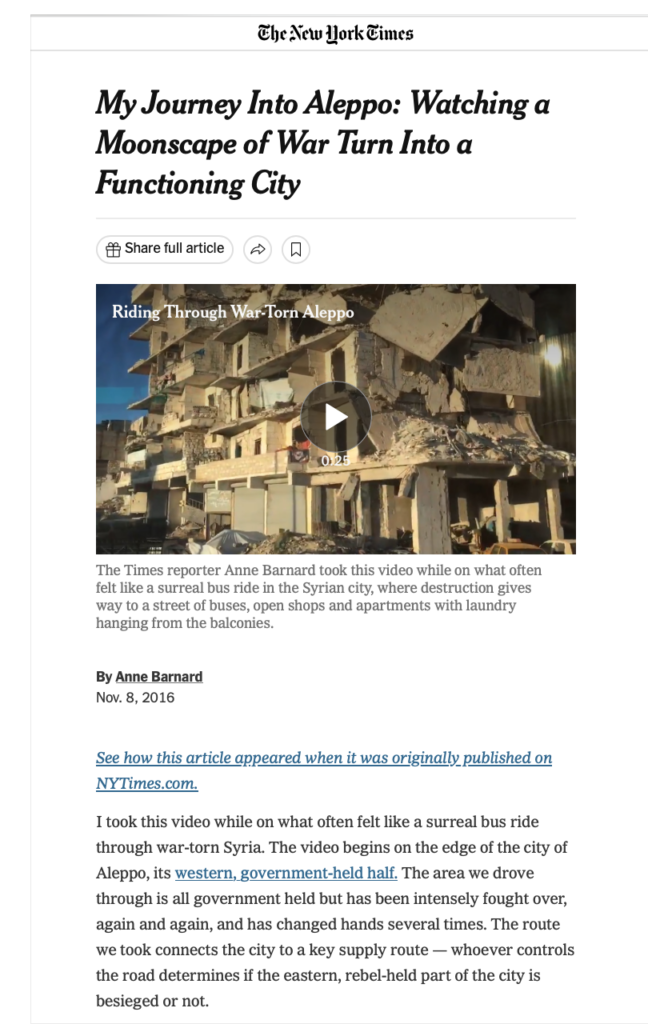
In this story, the headline already sets the stage for the writer’s involvement:
My Journey Through Aleppo: Watching a Moonscape of War Turn into a Functioning City. The story begins with a video, sort of the visual asset as the lead paragraph. Then the writer writes:
“I took this video while on what often felt like a surreal bus ride through war-torn Syria. The video begins on the edge of the city of Aleppo, its western, government-held half. The area we drove through is all government held but has been intensely fought over, again and again, and has changed hands several times. The route we took connects the city to a key supply route — whoever controls the road determines if the eastern, rebel-held part of the city is besieged or not.”
The New York Times, By Ellen Mirojnick
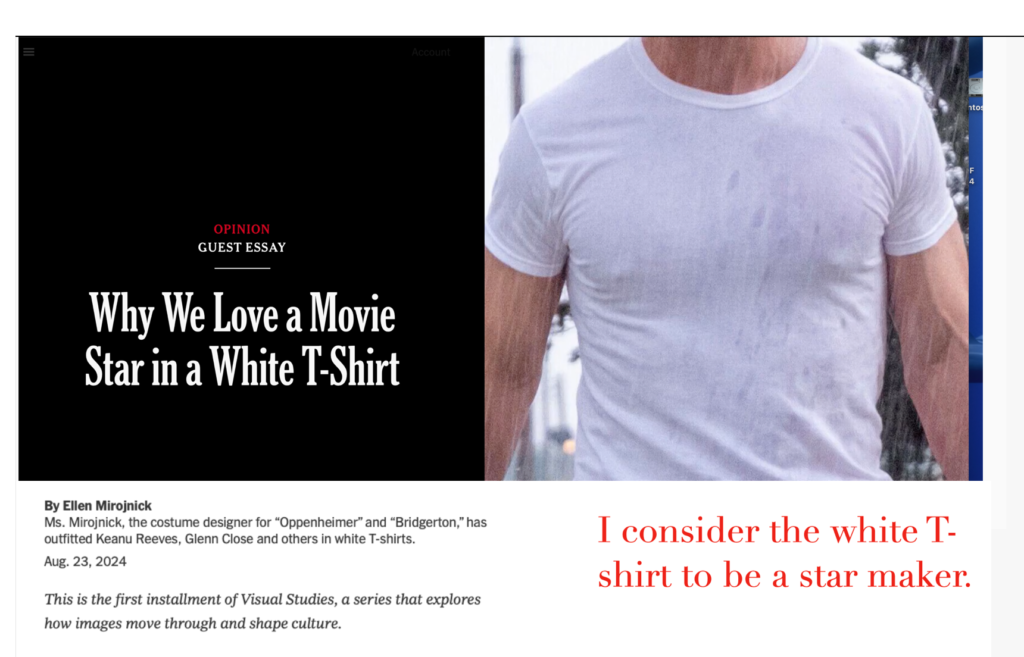
This is a guest essay so the use of the first person appears more justified by traditional standards. The writer opens with :
“I consider the white T-shirt to be a star maker.”
How would ChatGPT handle a similar story? I prompted the following to see what I would get:
‘”Act as if you are a magazine feature writer specializing in entertainment, and help me write a story about the role that white t shirts have played in the movies. Whether it’s on Marlon Brando or James Dean, Glenn Close or Glen Powell, we’ve seen how a white T-shirt at just the right moment can burn its way into an audience’s memory — as happened this summer when a show stopping scene featuring Mr. Powell in a wet white T-shirt in “Twisters” became a sensation.
This is how AI’s Chat GPT wrote it:
“There’s something ineffably cool about a white T-shirt on screen. Whether it’s clinging to the sculpted frame of Marlon Brando in A Streetcar Named Desire or exuding rebellious swagger on James Dean in Rebel Without a Cause, the plain white tee has transcended its role as a simple piece of clothing to become a defining symbol of American cinema.”
Definitely useable lead paragraph, but not as direct as the one sentence statement that the writer wrote to star her story and to hook us.
Does this mean that every piece lends itself to a first person treatment? Not at all.
There are other ways a writer can leave her scent in the story.
Creative Story Structures
One of those ways is by the style used to structure the narrative.
It is here that I see a symbiotic relationship between the tools of mobile storytelling—such as the use of video and audio— and the pacing of the narrative to facilitate scrolling vertically on a phone screen, for example.
Let’s look at this recent New York Times story about the major problem that trash collection represents for New York City.
New York Times, By Emily Badger and Larry Buchanan
Photographs and videos by DeSean McClinton-Holland

This is an unusual story structure. Notice that there is no headline, summary or even a lead paragraph. The reader dances into this story with a sentence that reads:
In New York City, trash has no dedicated space all its own.
Followed by photos, then:
It fits, instead, in plastic bags squeezed into the in-between spaces of the city.
Followed by a series of photos that show this.
This story starts as a photo essay with eight photos and a short video, before we see what resembles the structure of a traditional story: a headline and summary:
The Absurd Problem of New York City Trash
And the trade-offs required to fix it.
This style of structuring and pacing the story through a combination of photo essays and videos, including an ample historic account of trash collection in New York City as early as 1811, could only be the creation of a group of journalists who decided to let the reader sort of dance into an important story, with the visuals and the narrative combining to make it engaging.
This is how I outlined the story to show the blending of visuals (yellow stickers) with text:

Prioritize Emotional Resonance
One of the most significant limitations of AI is its inability to truly feel. While it can simulate emotions, it cannot experience them as humans do. Writers should use this to their advantage by crafting emotionally resonant scenes that tap into the reader’s empathy and understanding. Show vulnerability, passion, and curiosity in your writing—these are inherently human qualities that draw readers into the narrative and make your voice more powerful.
Tip: Focus on the emotional core of your story. Identify the key moments where emotions are heightened and describe them with vivid, sensory details. Allow your characters or subjects to experience and express a full range of emotions, and don’t shy away from conveying your own emotional responses as the writer.
Dr. Roy Peter Clark, who has served as head of the Writing Program at The Poynter Institute for Media Studies, and who has coached two generations of writers, told me recently:
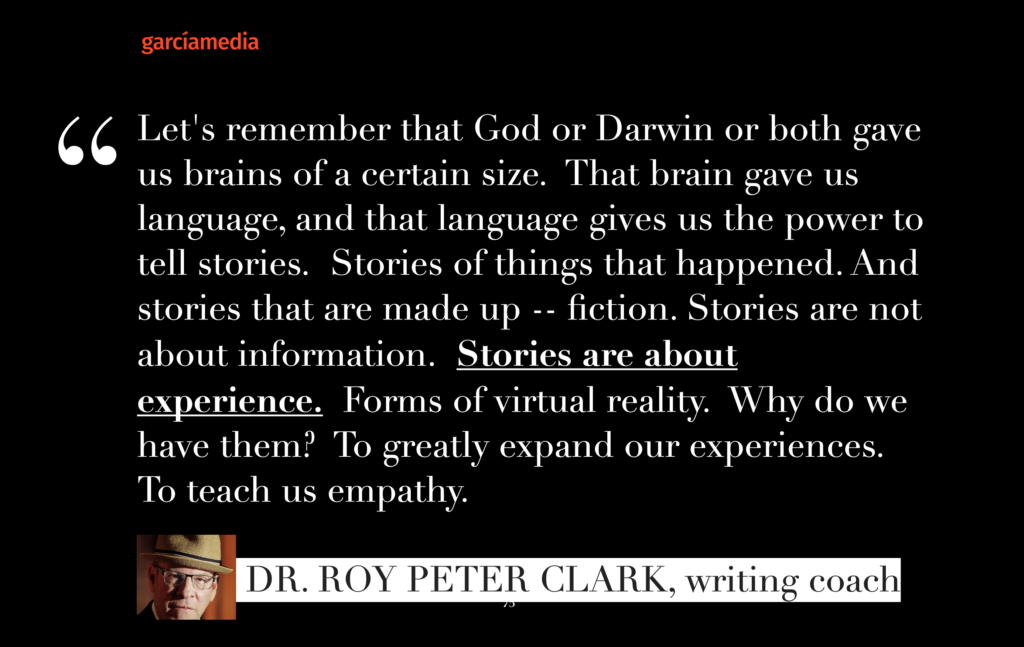
For example:
The Washington Post, By Sydney Trent
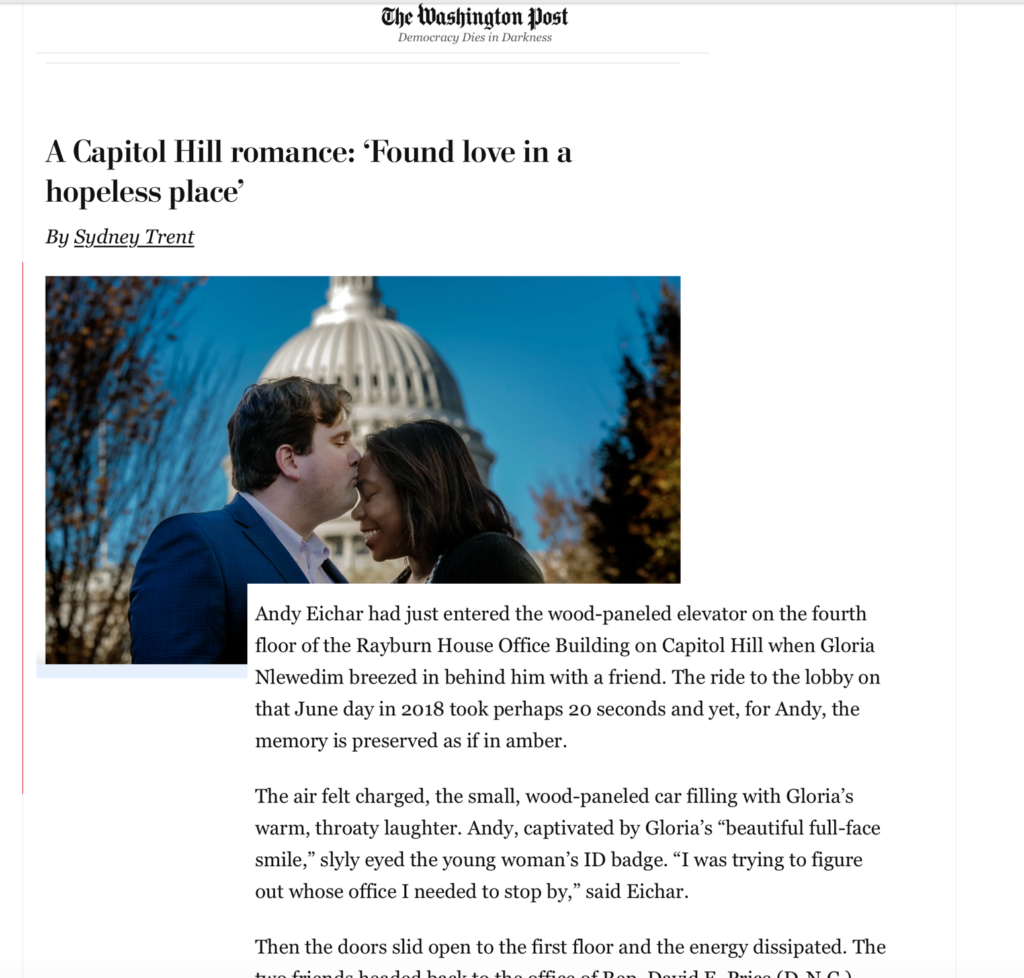
A Capitol Hill romance: ‘Found love in a hopeless place’
“Andy Eichar had just entered the wood-paneled elevator on the fourth floor of the Rayburn House Office Building on Capitol Hill when Gloria Nlewedim breezed in behind him with a friend. The ride to the lobby on that June day in 2018 took perhaps 20 seconds and yet, for Andy, the memory is preserved as if in amber.”
The examples here leave no doubt as to the value of the human in the crafting of engaging stories.
Still, Artificial Intelligence is a powerful tool that can allow journalists more time to craft their stories. We must see AI as a tool, not as a threat. Ray Bahat, of Bloomberg Beta, compares AI to a crane: it can do the heavy lifting, allowing a person to do something they otherwise would be completely unable to do themselves, or would take considerable time and effort to achieve.
Ethan Mollick, in his book Co-Intelligence, writes:
“AI can assist us as a thinking companion to improve our own decision-making, helping us reflect on our own choices (rather than simply relying on the AI to make choices for us). We are in a world where human decision-making skills can be easily augmented in a new way.”
I use AI daily and I see it as a companion, a hired assistant that is ready to help me regardless of what time zone I happen to be in. I am aware of how useful it can be to gather data.
I am also convinced that it could never replace what are the greatest assets that a human writer brings to the story—the humanity, the unique perspective, emotions, and creativity. Letting the scent—and soul—of the writer come through, making the writer’s voice unmistakably human, are key in a world increasingly influenced by artificial intelligence.
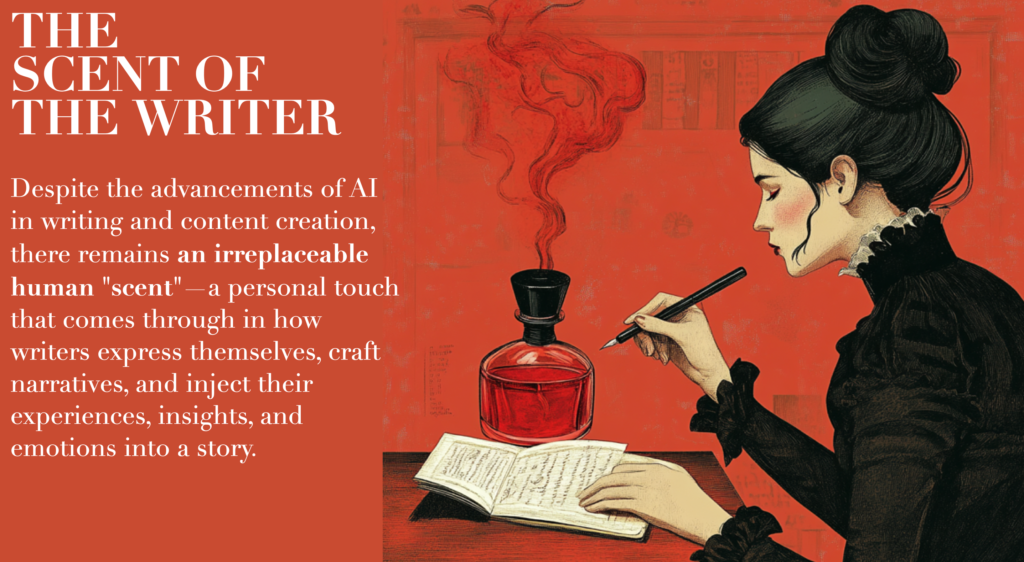
Next: The Scent of the Visual Journalists

Just like writers need to mark their spot and leave their scent on the narrative, visual journalists who use AI to create images can also do the same. Working and experimenting how this can be effectively done! Standby for more on this subject.
Our workshop deals with the two big revolutions facing editors
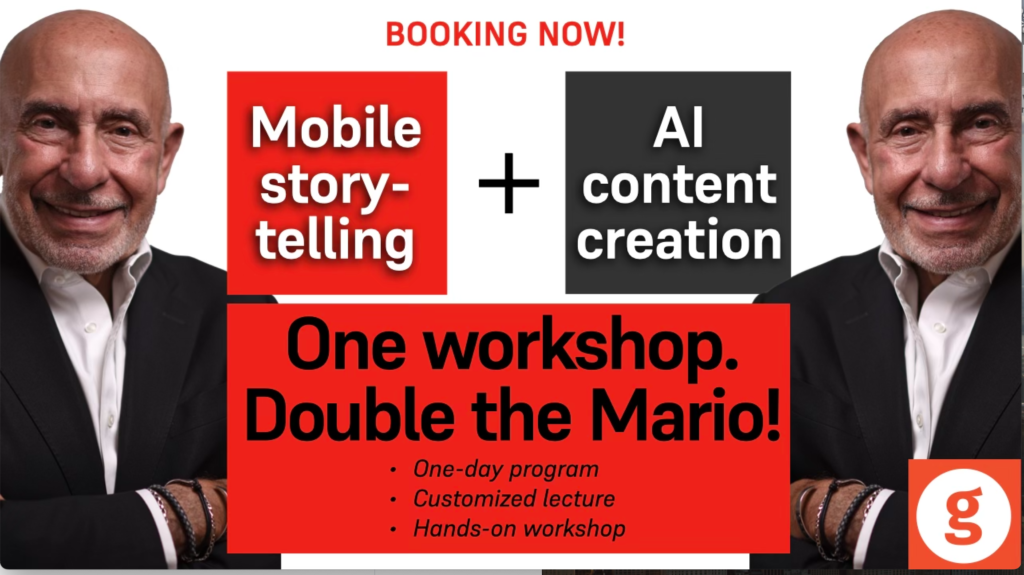
For me, it is imperative that editors approach content creation thinking in terms of mobile first.
Mobile first involves the type of transformation where all content is prepared thinking from small to large platform. Thinking small platform does not mean that the reporter conceptualizing a story for mobile consumption should not think BIG. So, plan from small to large, but think big in terms of the story content and the visual assets that go with it.
While mobile first is still elusive to so many newsrooms around the planet, here we are, in 2024, faced with an even bigger challenge not just knocking at our doors, but already IN: Artificial Intelligence.
Transformation and a change of mentality to face these challenges is the first step. Training and education to tackle them with a sense of focus and direction is essential.
That’s where our Garcia Media workshops come in
Our Garcia Media Mobile Storytelling workshops introduce your editorial team to the way we write, edit and design for mobile platforms. This one-day program includes a presentation and a hands-on workshop. We’ve added a new segment about AI for content creation.
Newsrooms around the planet have gone mobile-first after a Garcia Media workshop!
Our Garcia Media Mobile Storytelling workshops are proven to introduce your editorial team to the way we write, edit and design for mobile platforms. It is a one-day program that involves a presentation (where I summarize my Columbia University class content), and follow it with a hands on workshop.
For details, to customize, and to book: mario@garciamedia.com
Media predictions for 2024
Every year, Harvard University’s Nieman Lab publishes what selected media people predict for journalism in the following years. You can find my own prediction here;
https://www.niemanlab.org/2023/12/ai-takes-center-stage/
Start writing or type / to choose a block
How we use AI
Honored to be mentioned here:
https://www.newsroomrobots.com/p/how-10-news-industry-leaders-use
Order my AI book here:
https://thaneandprose.com/…/preorder-ai-what-to-expect…
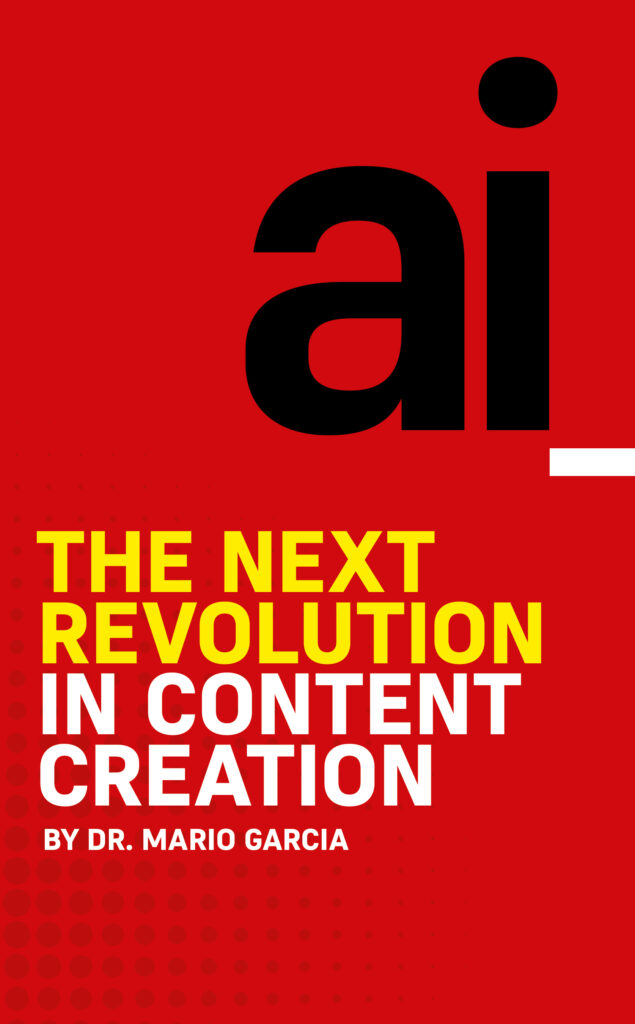
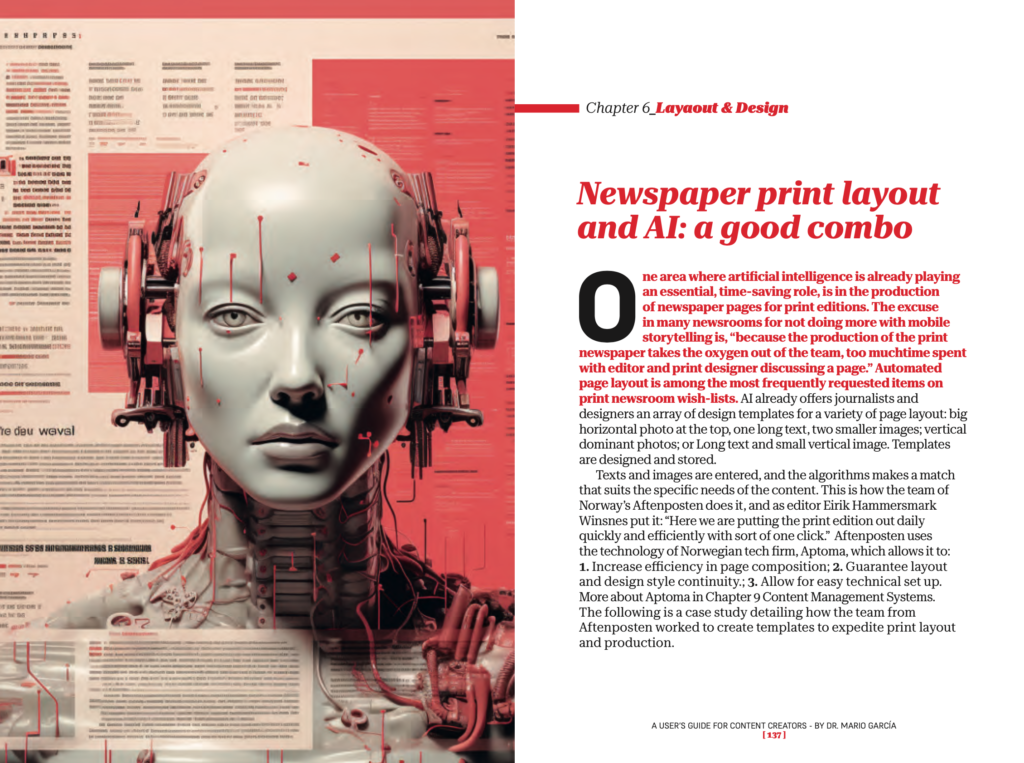
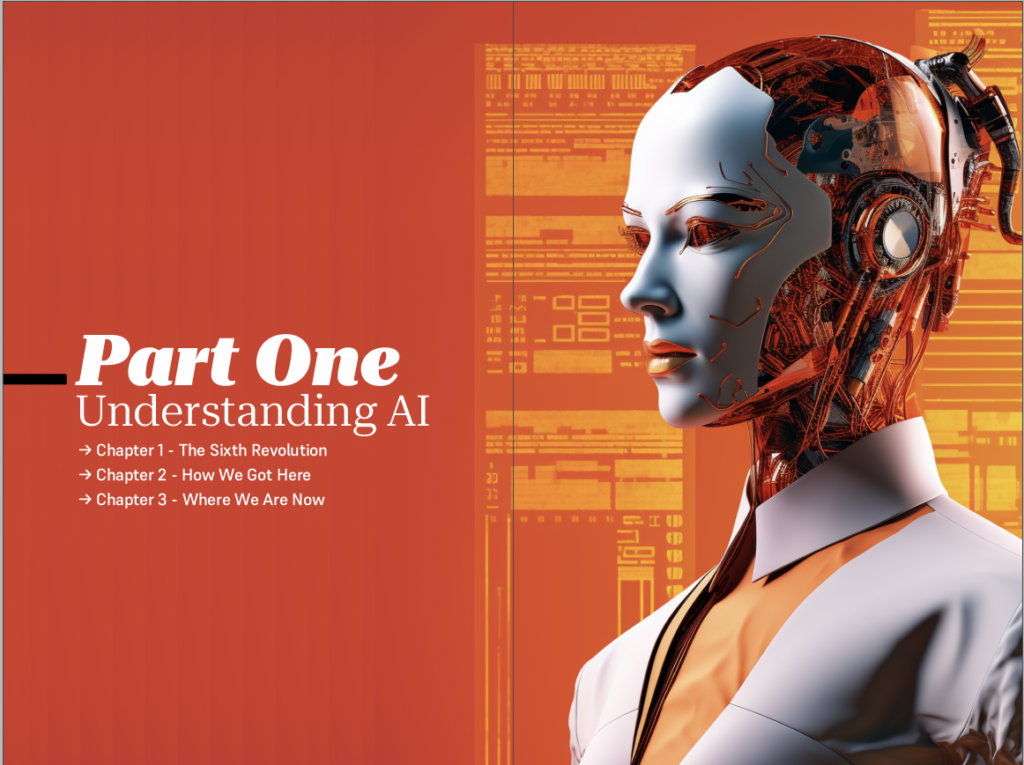
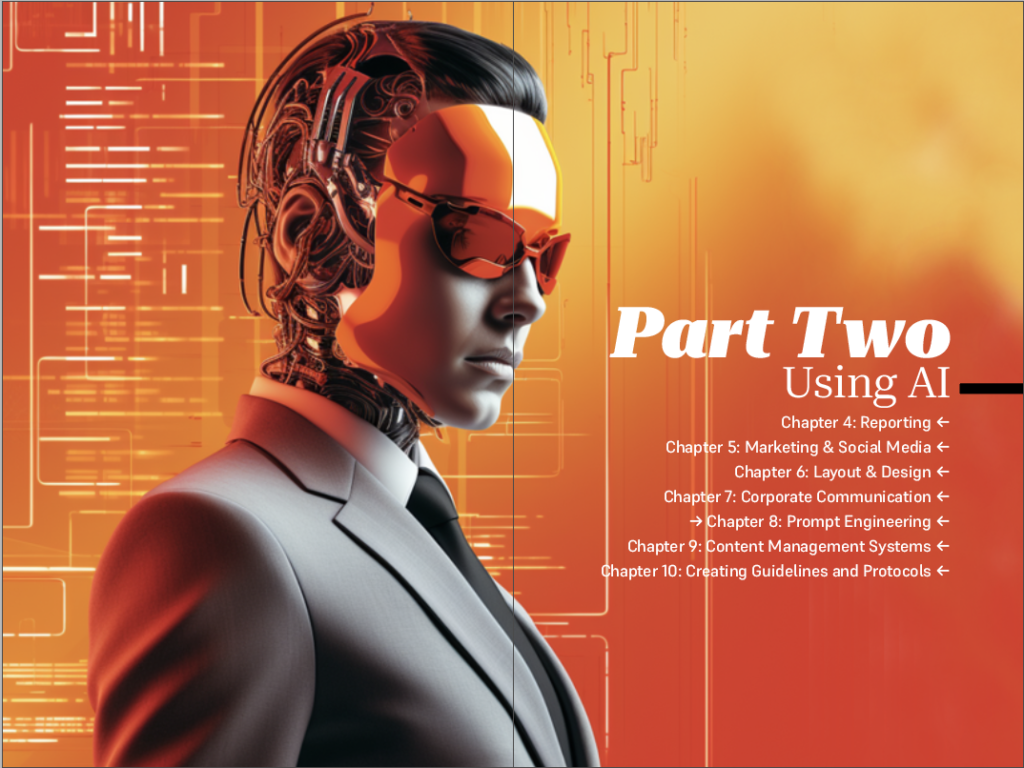
Here is a chance to pre-order my new book about Artificial Intelligence and content creation. The first 25 copies sold will be signed! Order here:
https://thaneandprose.com/…/preorder-ai-what-to-expect…
Reviews for AI book:
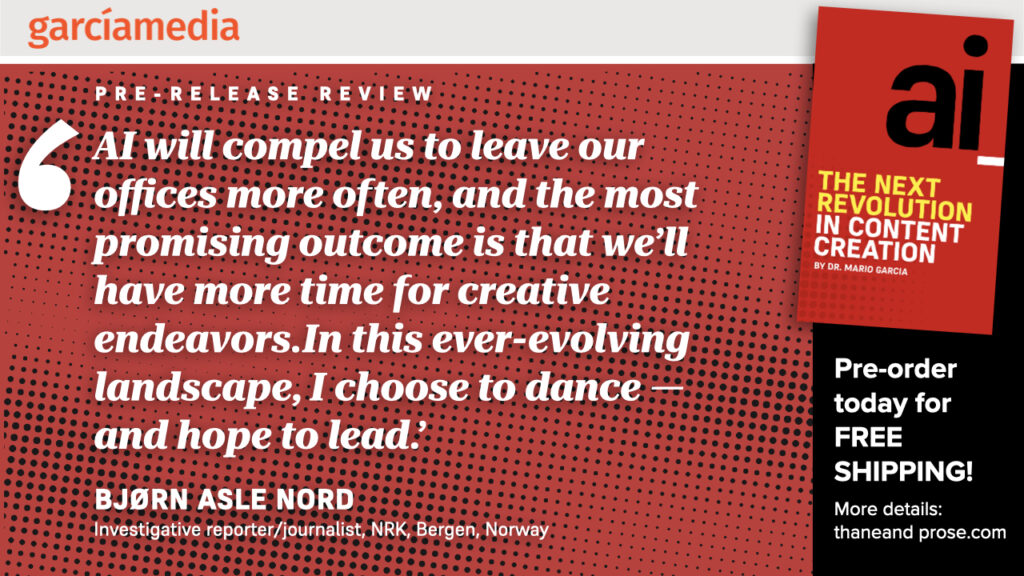
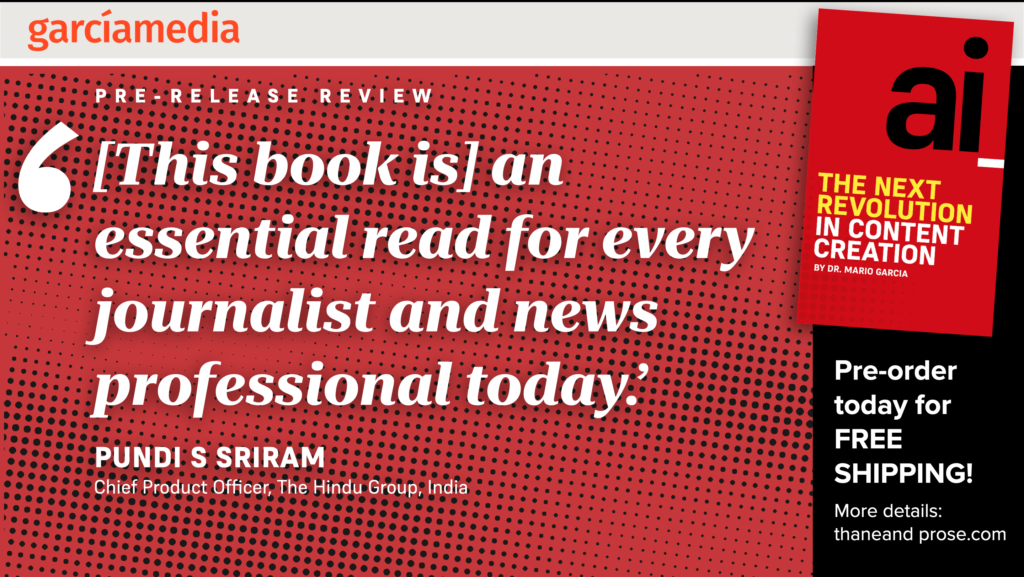
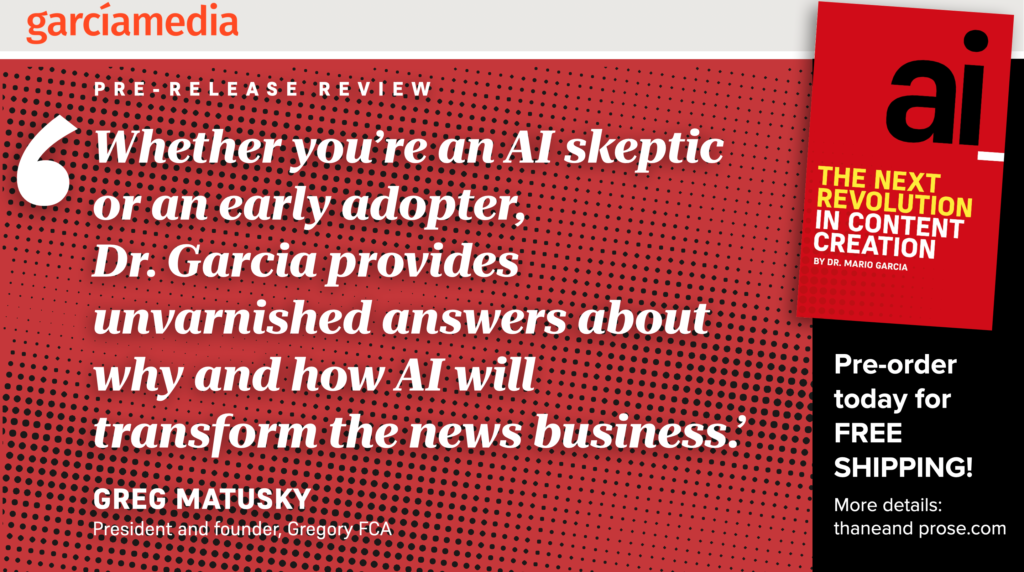

Did you read The Story yet?
I urge you to consult my latest book, The Story, a trilogy full of tips and explanations about mobile storytelling, which represents the latest genre for journalists to explore. See information below:
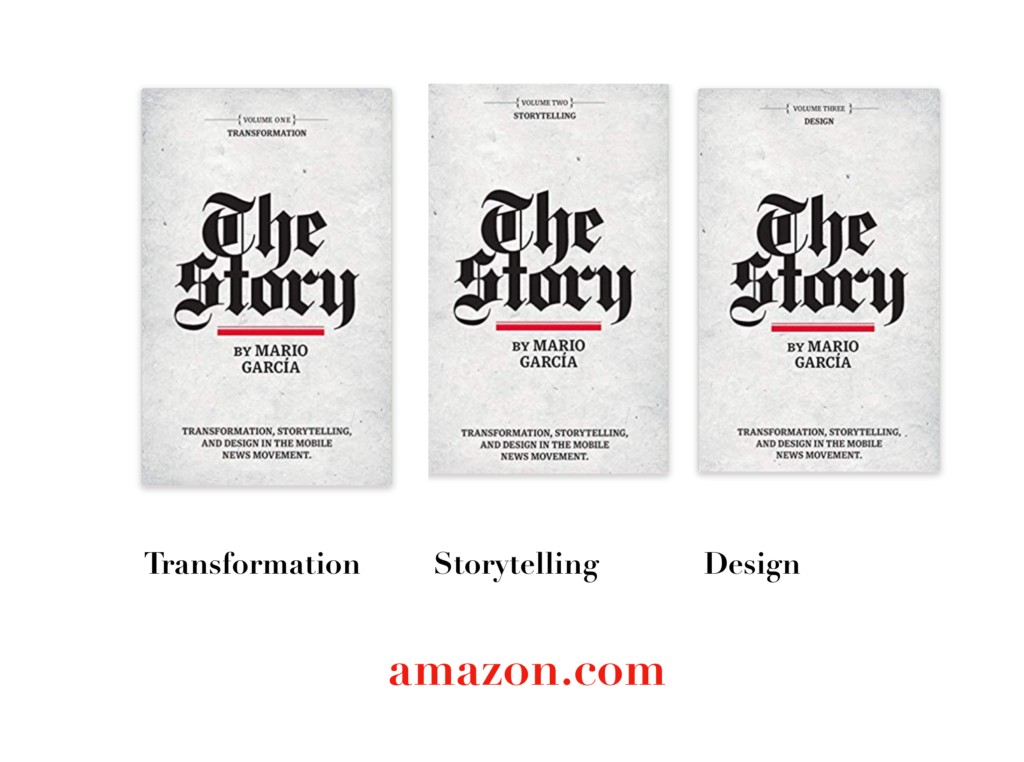
The full trilogy of The Story now available–3 books to guide you through a mobile first strategy. Whether you’re a reporter, editor, designer, publisher, corporate communicator, The Story is for you! https://amazon
Volume 1: Transformation
https://books.apple.com/us/book/the-story-volume-i/id1480169411
Volume Two: Storytelling
https://books.apple.com/us/book/the-story-volume-ii/id1484581220
Volume Three: Design
https://books.apple.com/us/book/the-story-volume-iii/id1497049918
Order the print edition of The Story, from Amazon, here:
TheMarioBlog post #3397